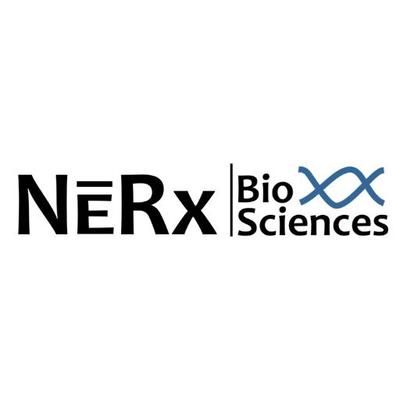预约演示
更新于:2025-05-07

NERx Biosciences, Inc.
更新于:2025-05-07
概览
标签
肿瘤
泌尿生殖系统疾病
内分泌与代谢疾病
小分子化药
疾病领域得分
一眼洞穿机构专注的疾病领域
暂无数据
技术平台
公司药物应用最多的技术
暂无数据
靶点
公司最常开发的靶点
暂无数据
| 排名前五的药物类型 | 数量 |
|---|---|
| 小分子化药 | 5 |
| 排名前五的靶点 | 数量 |
|---|---|
| ERCC1 x ERCC4 | 1 |
| RPAIN | 1 |
关联
5
项与 NERx Biosciences, Inc. 相关的药物靶点 |
作用机制 RPAIN inhibitors |
非在研适应症- |
最高研发阶段临床前 |
首次获批国家/地区- |
首次获批日期- |
靶点- |
作用机制- |
在研适应症 |
非在研适应症- |
最高研发阶段临床前 |
首次获批国家/地区- |
首次获批日期- |
作用机制 ERCC1 modulators [+1] |
在研适应症- |
非在研适应症- |
最高研发阶段临床前 |
首次获批国家/地区- |
首次获批日期- |
100 项与 NERx Biosciences, Inc. 相关的临床结果
登录后查看更多信息
0 项与 NERx Biosciences, Inc. 相关的专利(医药)
登录后查看更多信息
3
项与 NERx Biosciences, Inc. 相关的文献(医药)2024-03-22·Cancer Research
Abstract 5616: Targeting the DNA damage response sensor replication protein A for first in class cancer therapy
作者: Pawelczak, Katherine ; VanderVere-Carozza, Pamela ; Turchi, John ; Jordan, Matthew
2023-12-01·Molecular Cancer Therapeutics
Abstract B052: Small molecule RPA inhibitors abrogate the ATR kinase signaling pathway
作者: Jordan, Matthew R ; Turchi, John J ; Gavande, Navnath S ; Ainembabazi, Diana ; Pawelczak, Katherine S ; VanderVere-Carozza, Pamela S
2017-07-01·Cancer Research
Abstract 1416: Development of small molecule inhibitors for cancer therapy by targeting RPA and XPA nucleotide excision repair proteins
作者: Turchi, John J. ; Gavande, Navnath S. ; VanderVere-Carozza, Pamela S. ; Vernon, Tyler L. ; Pawelczak, Katherine
100 项与 NERx Biosciences, Inc. 相关的药物交易
登录后查看更多信息
100 项与 NERx Biosciences, Inc. 相关的转化医学
登录后查看更多信息
组织架构
使用我们的机构树数据加速您的研究。
登录
或

管线布局
2025年12月21日管线快照
管线布局中药物为当前组织机构及其子机构作为药物机构进行统计,早期临床1期并入临床1期,临床1/2期并入临床2期,临床2/3期并入临床3期
药物发现
1
4
临床前
登录后查看更多信息
当前项目
| 药物(靶点) | 适应症 | 全球最高研发状态 |
|---|---|---|
NHEJ pathway (NERx Biosciences) | - | 临床前 |
XPF/ERCC1 (NERx Biosciences) ( ERCC1 x ERCC4 ) | - | 临床前 |
NERx-505 | 卵巢癌 更多 | 临床前 |
TDRL-551 ( RPAIN ) | 卵巢癌 更多 | 临床前 |
NERx-X80 | 肿瘤 更多 | 药物发现 |
登录后查看更多信息
药物交易
使用我们的药物交易数据加速您的研究。
登录
或

转化医学
使用我们的转化医学数据加速您的研究。
登录
或

营收
使用 Synapse 探索超过 36 万个组织的财务状况。
登录
或

科研基金(NIH)
访问超过 200 万项资助和基金信息,以提升您的研究之旅。
登录
或

投资
深入了解从初创企业到成熟企业的最新公司投资动态。
登录
或

融资
发掘融资趋势以验证和推进您的投资机会。
登录
或

生物医药百科问答
全新生物医药AI Agent 覆盖科研全链路,让突破性发现快人一步
立即开始免费试用!
智慧芽新药情报库是智慧芽专为生命科学人士构建的基于AI的创新药情报平台,助您全方位提升您的研发与决策效率。
立即开始数据试用!
智慧芽新药库数据也通过智慧芽数据服务平台,以API或者数据包形式对外开放,助您更加充分利用智慧芽新药情报信息。
生物序列数据库
生物药研发创新
免费使用
化学结构数据库
小分子化药研发创新
免费使用